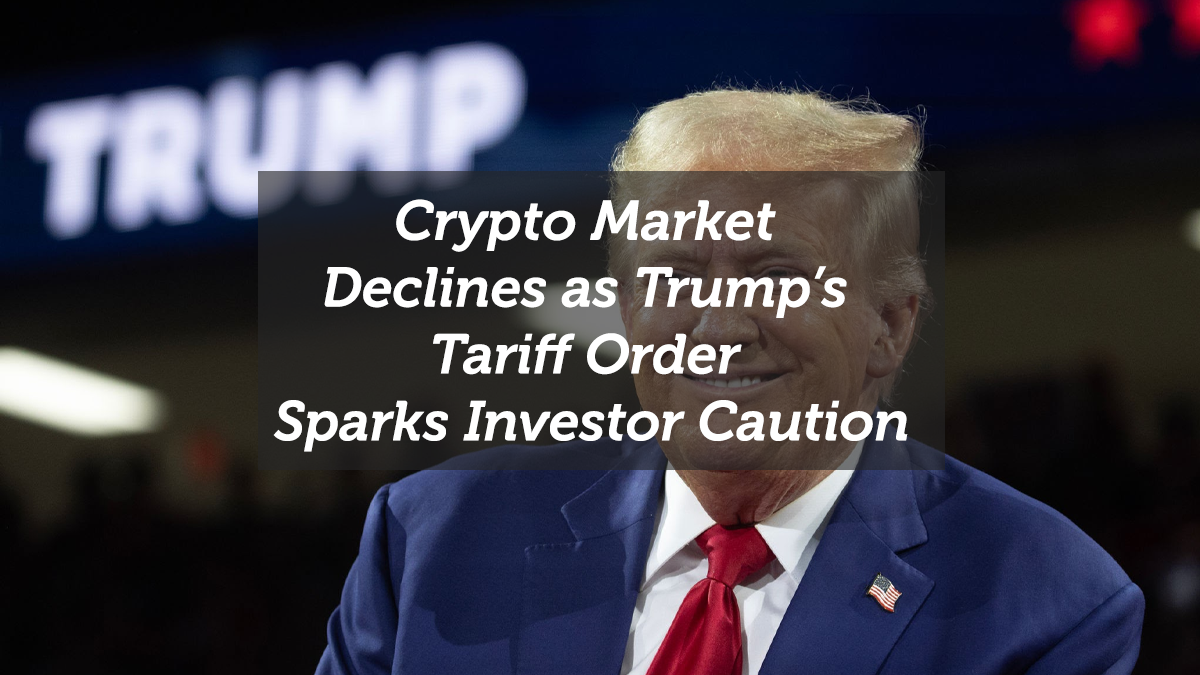
Crypto Market Declines as Trump’s Tariff Order Sparks Investor Caution
The cryptocurrency market is experiencing a significant downturn, with total market capitalization falling by more than 2.5% to $3.15 trillion. Leading the losses, Ethereum (ETH) dropped 5%, trading below $2,700.
The decline comes in response to an executive order by President Donald Trump imposing new tariffs on imports from Mexico, Canada, and China. This heightened concerns over inflation and economic uncertainty, leading investors to pull back from high-risk assets like cryptocurrencies.
Here’s a detailed breakdown of the market reaction, key reasons behind the decline, and what analysts expect moving forward.
Crypto Market Overview: A Sharp Sell-Off
1. Market Capitalization Drops Over 2.5%
- The total crypto market cap fell to approximately $3.15 trillion, reflecting a broad sell-off.
- Most major cryptocurrencies experienced declines, with Ethereum leading the losses.
2. Ethereum (ETH) Faces a 5% Drop
- ETH dropped below $2,700, losing 5% in the past 24 hours.
- Ethereum’s decline outpaced Bitcoin (BTC) and other major altcoins, signaling broader concerns in the market.
3. Other Cryptocurrencies Also Decline
- Bitcoin (BTC): Fell 2.1%, now trading around $98,400.
- Solana (SOL): Dropped 3.7%, now trading near $187.
- XRP and Dogecoin (DOGE) also saw declines, tracking the broader market sentiment.
Why Is the Crypto Market Falling? Key Factors Behind the Decline
1. Trump’s Tariff Executive Order Shakes Markets
The biggest catalyst for the crypto market drop was Trump’s new tariffs on imports from three key U.S. trading partners:
✅ Mexico: 25% tariff on most imports
✅ Canada: 25% tariff on most imports
✅ China: 10% tariff on imported goods
These tariffs have sparked fears of a trade war, which can create economic uncertainty and inflationary pressures.
2. Inflation Concerns and Risk Aversion
- Tariffs raise the cost of imported goods, potentially driving inflation higher.
- Higher inflation can lead to tighter monetary policies, making riskier assets like crypto less attractive.
- Investors shifted funds into traditional safe-haven assets like gold and U.S. Treasury bonds.
3. Leverage and Liquidations Intensify the Drop
- The market had high leverage, particularly in Bitcoin and Ethereum derivatives.
- The price drop triggered over $2 billion in liquidations, accelerating the downturn.
- Many traders were forced to sell their holdings, adding to downward pressure.
How the Crypto Market Reacted Compared to Stocks and Other Assets
1. Crypto Markets Mirrored Stock Market Declines
- U.S. stock indices like the S&P 500 and NASDAQ also dropped, as investors reacted to Trump’s tariffs.
- Companies reliant on international trade, including automakers and tech firms, saw significant losses.
2. Bitcoin’s Response: A Hedge or a Risk Asset?
- Bitcoin’s price fell, contradicting its “inflation hedge” narrative.
- This suggests that in times of immediate economic uncertainty, BTC trades more like a risk asset than digital gold.
3. Stablecoin Demand Rises
- As markets tumbled, there was an uptick in demand for stablecoins like USDT and USDC, signaling a move toward stability.
What’s Next? Future Outlook for the Crypto Market
1. Could This Be a Buying Opportunity?
- Some analysts suggest that the sell-off could be temporary, with long-term investors buying the dip.
- If the market stabilizes, Bitcoin and Ethereum could recover once economic uncertainty clears.
2. Will a Weaker U.S. Dollar Boost Crypto?
- If tariffs slow down U.S. economic growth, the Federal Reserve may adopt a looser monetary policy.
- A weaker U.S. dollar could push investors back into Bitcoin and alternative assets.
3. Political and Regulatory Uncertainty Remains
- While Trump’s administration has previously shown support for crypto, this tariff decision introduces a new layer of uncertainty.
- Future policy decisions could shape investor sentiment toward digital assets.
Final Thoughts: A Short-Term Setback or a Bigger Shift?
The recent crypto market drop highlights the deep connection between global economic policies and digital asset performance. While Trump’s tariffs have sparked fear and a sell-off, the long-term effects could still play out in various ways.
Key Takeaways:
✔ The total crypto market cap dropped over 2.5%, reaching $3.15 trillion.
✔ Ethereum led the decline, falling 5% to below $2,700.
✔ Trump’s tariffs on Mexico, Canada, and China increased inflation fears, prompting risk aversion.
✔ $2 billion in liquidations accelerated the market downturn.
✔ Long-term investors are watching for signs of a potential recovery.
As economic uncertainty lingers, investors should closely monitor global trade developments and their impact on crypto markets. Whether this is a temporary correction or the start of a larger trend will depend on how markets digest the tariff news and upcoming policy changes.
















